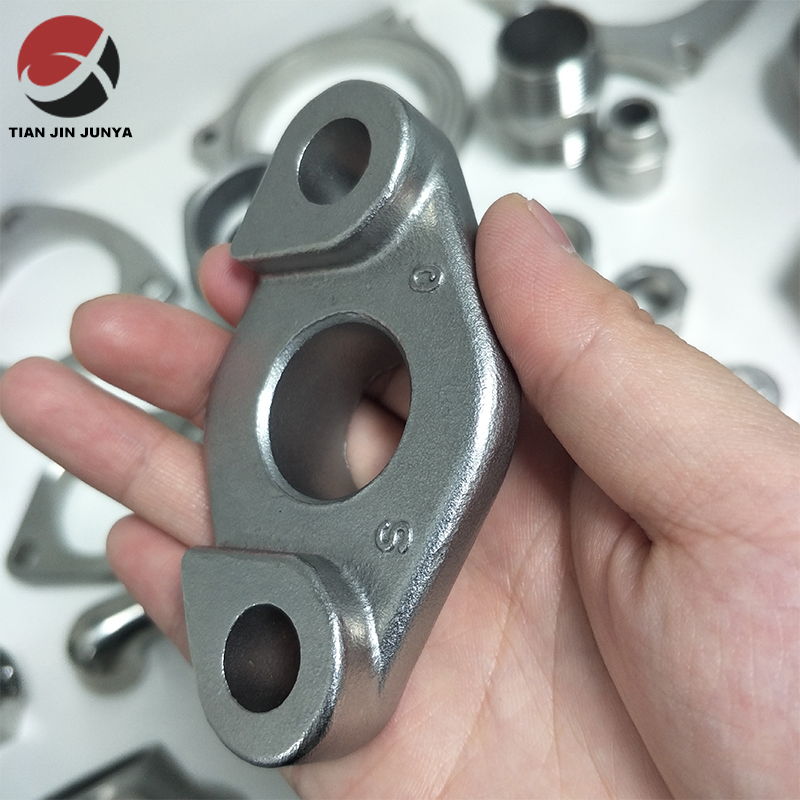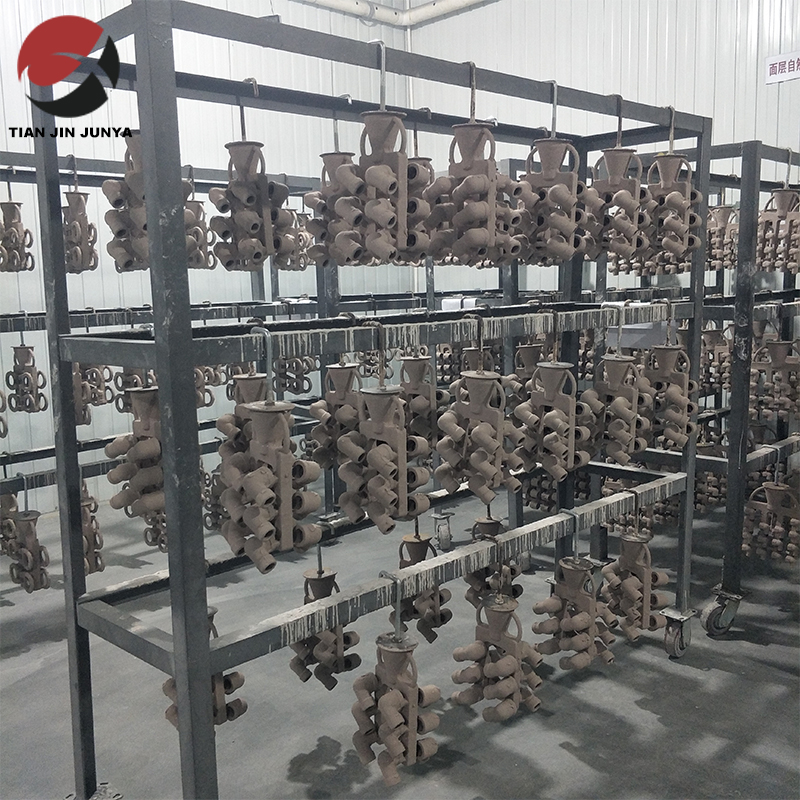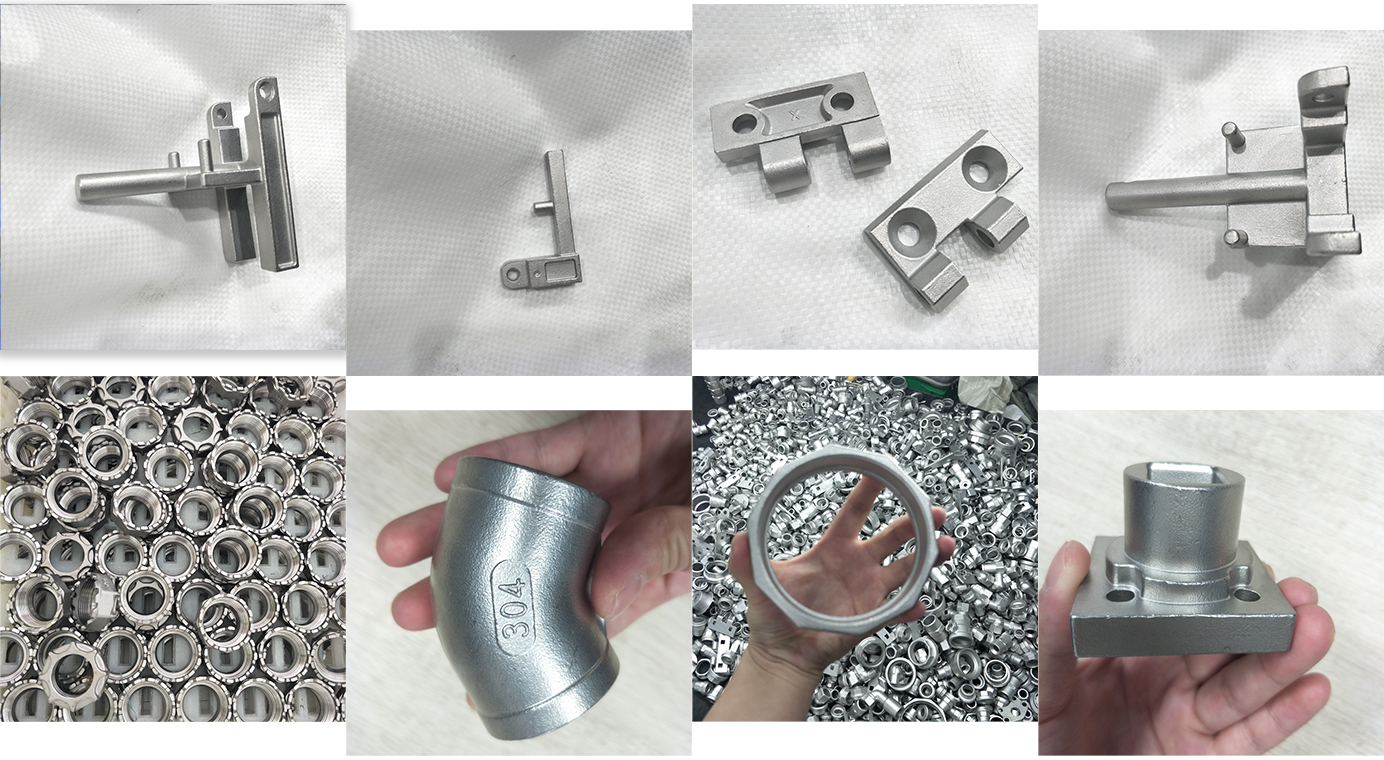In the production of stainless steel products, some products have strange shapes and cannot be produced by processes such as bending pipes. To produce such products with irregular shapes (hollow or solid inside), a wax mold is used to make a sand mold →The process of filling and molding liquid materials.
Advantages: Various styles of products can be made according to different wax patterns.
Disadvantages: The precision of the formed blank is not high, and the surface roughness is relatively large.
1. Make molds according to different shapes of products. The mold is divided into upper and lower concave molds, which are completed through comprehensive processes such as turning, planing, milling, erosion, and EDM. The shape and size of the pits are the same as the half of the product. Because the wax mold is mainly used for industrial wax molding, the aluminum alloy material with low melting point, low hardness, low requirement, cheaper price and lighter weight is used as the mold.
2. Use aluminum alloy molds to produce a large number of industrial wax solid core models. Under normal circumstances, an industrial wax solid core model can only correspond to a blank product.
3. Refine the margin around the wax mold. After deburring, stick multiple single wax molds on the pre-prepared die (also called group tree). This die is also an industrial wax solid produced by wax molds. Core model. (It looks like a tree)
4. Coat multiple wax molds fixed on the die with industrial glue and spray the first layer of fine sand (a kind of refractory sand, high temperature resistance, usually silica sand). The sand particles are very small and fine, so as to ensure that the surface of the final blank is as smooth as possible.
5. Allow the wax mold sprayed with the first layer of fine sand to dry naturally at the set room temperature (or constant temperature), but it cannot affect the shape of the internal wax mold. The natural drying time depends on the internal complexity of the product itself. Generally fine The first air-drying time of the casting is about 5-8 hours.
6. After the first sand blasting and natural air drying, continue to apply industrial glue (silicon solution slurry) on the surface of the wax mold, and spray the second layer of sand. The particle size of the second layer of sand is larger than that of the previous first layer of sand. The big ones come, the rough ones come. After spraying the second layer of sand, let the wax mold dry naturally at the set constant temperature.
7. After the second sand blasting and natural air drying, proceed to the third sand blasting, the fourth sand blasting, and the fifth sand blasting by analogy. Requirements: Adjust the number of sandblasting according to product surface requirements, size, and weight. Under normal circumstances, the number of sandblasting is 3-7 times.
The size of the sand particles is different for each blasting process. Usually, the sand particles in the subsequent process are coarser than the sand particles in the previous process, and the air-drying time is different. Generally, the production cycle of sanding on a complete wax model is about 3 to 4 days.
8. Before the baking process, the wax mold that has completed the sandblasting process is evenly coated with a layer of white industrial latex (silicon soluble slurry) to bond and solidify the sand mold and seal the wax mold. Preparation for the baking process. At the same time, after the baking process, the brittleness of the sand mold can be improved, which is convenient for breaking the sand layer and taking out the blank.
9. Baking process, put the wax mold fixed on the die head and complete the sandblasting and air-drying process into a special metal sealed oven for heating (usually a kerosene-burning steam furnace). Because the melting point of industrial wax is not high, the temperature is about 150 ゜, the wax mold is melted by heat to form wax and flow out along the gate. This process is dewaxing. The wax model after dewaxing is just an empty sand shell. The key to precision casting is to use this empty sand shell. (Generally, this kind of wax can be used repeatedly, but these waxes must be filtered again, otherwise the unclean wax will affect the surface quality of the blank, such as: surface sand holes, pitting, and also affect the shrinkage rate of the precision casting.
10. Baking sand shell, In order to make the dewaxed sand shell more solid and stable, the sand shell must be baked before pouring the stainless steel water, usually in a high temperature (about 1000 ゜) stove.
11. Pour the stainless steel water that has been dissolved into liquid at high temperature into the sand shell after dewaxing. The liquid stainless steel water fills the space formed by the wax mold until it is completely filled, including the middle die.
12. Because materials of different compositions are mixed in the boiler that melts stainless steel, the factory must check the percentage of material. Then adjust the release according to the required ratio, such as adding those elements to achieve the desired effect.
13. After the liquid stainless steel water is cooled and solidified, the outermost sand shell is broken with the help of mechanical tools or manpower, and the solid stainless steel product is exposed in the shape of the original wax mold, which is the final required blank. Then it will be cut one by one, separated and then roughly ground into a single blank.
14. Inspection of the blank: The blank with blisters and pores on the surface must be repaired with argon arc, and when the waste is cleaned, it should be returned to the furnace.
15. Cleaning the blanks: The blanks that have passed the inspection must go through the cleaning process.
16. Carry out other processes until the finished product.
www.junyacasting.com
Post time: Dec-09-2021






